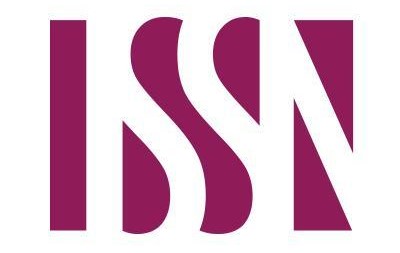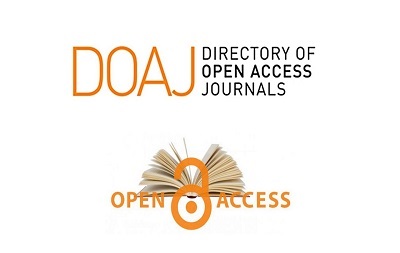Organizational stability of physical education lessons: Benefits for relational coordination among middle school students
Main Article Content
Abstract
The research aimed to: - Determine the level of organizational stability possessed by physical education lessons in middle schools affiliated with the first Baghdad Al-Karkh Education Directorate from the students’ point of view. - Determining the level of relational coordination among middle school students affiliated with the First Karkh Baghdad Education Directorate during the physical education lesson.
The researcher used the descriptive approach in the research based on survey methods and correlational relationships. He defined the research community as the students of the preparatory schools affiliated with the First Karkh Baghdad Education Directorate, who numbered (9,300) students. From this community, the researcher chose the main research sample, and the number of its members reached (369) students. The goal is to collect data on the relational coordination between students and the organizational stability of the physical education lesson, by preparing two measures for this purpose, which were applied after meeting the necessary scientific standards. The researcher concluded:
- Physical education lessons in middle schools affiliated with the First Baghdad Al-Karkh Education Directorate have a high level of organizational stability from the point of view of their students - Students in middle schools affiliated with the First Baghdad Al-Karkh Education Directorate have a high level of relational coordination among themselves.
Article Details

This work is licensed under a Creative Commons Attribution-NonCommercial 4.0 International License.
References
Abdul-Zahra, & L. H. A. J. (2013). Find extract Impact multimedia system integrated collaborative learning style in the education of the technical performance of the elevation jerk and the cognitive level of weightlifting. Journal of Studies and Researches of Sport Education, 35, 9–25. https://www.iasj.net/iasj/article/91094
Aldewan, L. H., Abdul-Sahib, H. M., & al-Mayahi, S. J. K. (2013). Platform impact media super overlap (Alhiebermedia) to learn the effectiveness of the long jump for the Deaf Mute. Journal of Studies and Researches of Sport Education, 36, 27–41. https://www.iasj.net/iasj/article/94541
Aldewan, Lamyaa Hasan, Abed Malih, F., & Abdel Karim, K. L. (2006). The effect of using the educational bag on the level of learning some offensive skills with the epee weapon. Journal of Studies and Researches of Sport Education, 19, 18–44.
Andrew Huey Jr, W., & Andrew Jr, W. (2022). Reestablishing Organizational Stability Through Leading Resilience: Avoiding the Maelstrom of Personal Distress Caused by an Organizational Disruption.
Bolton, R., Logan, C., & Gittell, J. H. (2021). Revisiting Relational Coordination: A Systematic Review. Journal of Applied Behavioral Science, 57(3), 290–322. https://doi.org/10.1177/0021886321991597
Floyd J. Fowler, Jr. C. (2014). Survey Research Methods (Fifth Edit).
Fuchs, C., & Reichel, A. (2023). Effective communication for relational coordination in remote work: How job characteristics and HR practices shape user–technology interactions. Human Resource Management, 62(4), 511–528. https://doi.org/10.1002/hrm.22161
Gallego Sánchez, M. del C., De-Pablos-Heredero, C., Medina-Merodio, J. A., Robina-Ramírez, R., & Fernandez-Sanz, L. (2021). Relationships among relational coordination dimensions: Impact on the quality of education online with a structural equations model. Technological Forecasting and Social Change, 166(January). https://doi.org/10.1016/j.techfore.2021.120608
Gilstrap, J. B., & Hart, T. A. (2020). How employee behaviors effect organizational change and stability. Journal of Business Research, 109(April 2019), 120–131. https://doi.org/10.1016/j.jbusres.2019.11.049
Gittell, J. H., Logan, C., Cronenwett, J., Foster, T. C., Freeman, R., Godfrey, M., & Vidal, D. C. (2020). Impact of relational coordination on staff and patient outcomes in outpatient surgical clinics. Health Care Management Review, 45(1), 12–20. https://doi.org/10.1097/HMR.0000000000000192
Hamal, A. M. (2022). The organization and the question of organizational stability. Introduction Journal for Human and Social Studies, 7(2), 425–444. DOI: https://doi.org/10.59791/ahssj.v7i2.2902
Iwendi, F. (2020). Labour-Management Cooperation: A Study of Organizational Stability and Survival in Skelabelt Services Limited, Nigeria 1. 4(1), 174–188.
Lamia Hassan Mohammed. (2005). The effect of a proposed educational curriculum for physical education lessons on developing the creative abilities of first-year primary school students. Journal of Studies and Researches of Sport Education, 18, 33–54. https://www.iasj.net/iasj/article/53043
Lee, H. W., & Kim, E. (2020). Workforce diversity and firm performance: Relational coordination as a mediator and structural empowerment and multisource feedback as moderators. Human Resource Management, 59(1), 5–23. https://doi.org/10.1002/hrm.21970
Obiora, O. C., & Friday, E. O. (2018). Human Resource Conservation and Organisational Stability in Nigeria. Igbinedion University Journal of Arts & Social Sciences, Vo.3(No. 1), 127–136.
Rabahi, M. (2022). Human resources development from a religious perspective and its relationship to organizational stability. In A field study at the Shoes and Leather Industries Foundation. http://dspace.univ-batna.dz/xmlui/handle/123456789/1418
Sharma, S., & Pallin, S. (2021). Structural Impact on Relational Coordination and Organizational Learning : A Study of Norwegian Organizations. June.
Spitzer, E. G., Kaitz, J., Fix, G. M., Harvey, K. L. L., Stadnick, N. A., Sullivan, J. L., Williamson, A. K., & Miller, C. J. (2023). Developing Relational Coordination: A Qualitative Study of Outpatient Mental Health Teams. Administration and Policy in Mental Health and Mental Health Services Research, 50(4), 591–602. https://doi.org/10.1007/s10488-023-01261-2
Youssef, K., & Latrash Boukhalfa. (2023). Human relations and their role in achieving organizational stability in the economic institution. In A field study in the Electricity and Gas Distribution Directorate - Tebessa. http//localhost:8080/jspui/handle/123456789/10270





 IASJ
IASJ CC-BY-4.0
CC-BY-4.0 turnitin
turnitin ISSN
ISSN DOAJ
DOAJ Crossref
Crossref GoogleScholar
GoogleScholar Orcid
Orcid